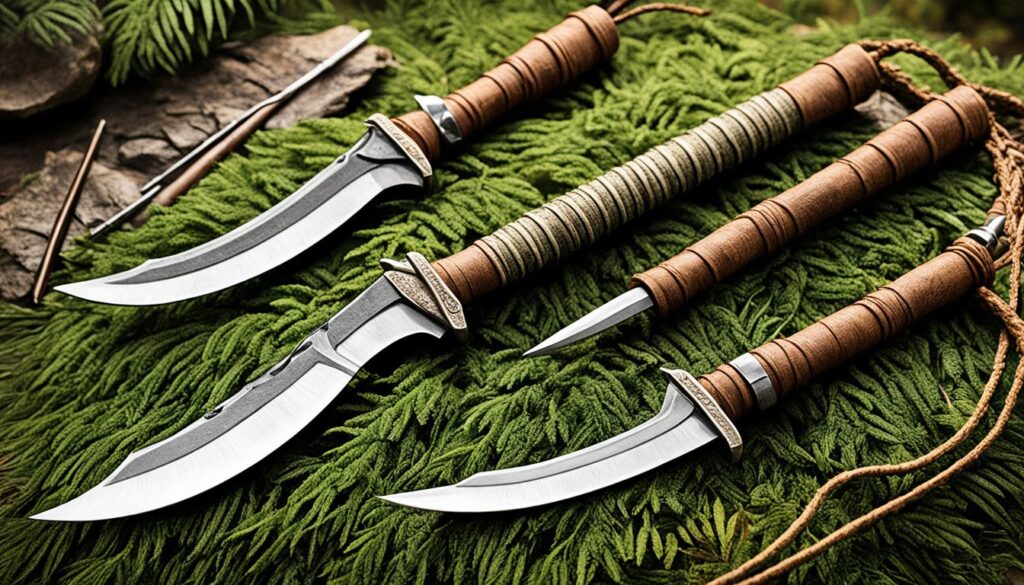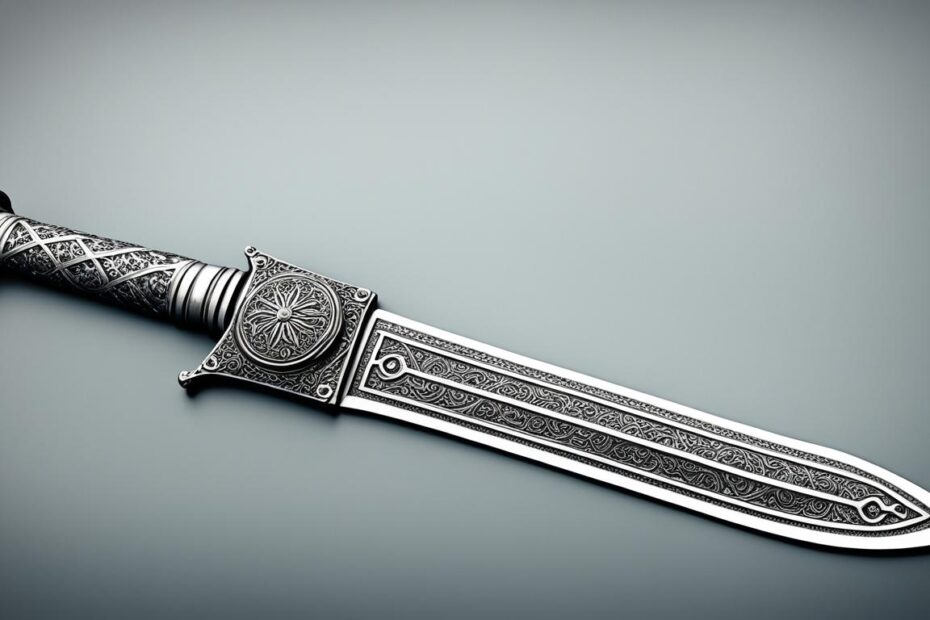Welcome to our exploration of the Punyal, a remarkable traditional Filipino weapon that holds immense cultural significance. Known as a sword Punyal, this weapon showcases the rich history and craftsmanship of Filipino culture. In this article, we will dive into the origins, evolution, craftsmanship, and cultural importance of the Punyal.
Filipino traditional weapons have always been a source of fascination, and the Punyal is no exception. Its design and purpose have evolved over time, adapting to the needs and traditions of the Filipino people. Understanding the historical context and craftsmanship behind the Punyal allows us to appreciate its significance.
Join us as we delve into the history of the Punyal, exploring its origins and its role in Filipino history. We will uncover the unique craftsmanship that goes into creating this weapon, showcasing the intricate details that make it a true masterpiece. Additionally, we will unravel the cultural significance and uses of the Punyal in Filipino society, from traditional practices to practical applications.
Whether you are a history enthusiast, a lover of traditional Filipino culture, or simply intrigued by the world’s diverse weapons, this article will provide you with a comprehensive understanding of the Punyal. Let’s embark on this journey together as we explore the cultural significance and exceptional craftsmanship of the Punyal, a sword deeply rooted in Filipino tradition.
History of the Punyal
The Punyal holds a rich historical legacy rooted in the Philippines. Its origins can be traced back centuries, evolving over time to become an integral part of Filipino history, culture, and tradition.
Initially used as a weapon in warfare, the Punyal played a significant role in battles and conflicts, showcasing the military prowess and skill of Filipino warriors. With its unique design and craftsmanship, it became a symbol of power and strength.
As Filipino society evolved, so did the significance of the Punyal. It transcended its role in warfare and became intertwined with traditional practices, cultural rituals, and ceremonies. This traditional weapon became an indispensable tool in the preservation and celebration of Filipino identity.
“The Punyal represents more than just a weapon; it embodies the spirit, resilience, and unity of the Filipino people. It is a testament to our history, and a reminder of our ancestors’ strength and valor.” – Dr. Sofia Lopez, Filipino Cultural Historian
The evolution of the Punyal reflects the changes in Filipino society, adjusting its purpose to meet the needs of the time. From its early days as a weapon of war to its modern-day significance in cultural practices, the Punyal continues to hold a special place in the hearts of the Filipino people.

Craftsmanship and Design of the Punyal
One of the key aspects that sets the Punyal apart is its exquisite craftsmanship and unique design. The Punyal embodies the traditional Filipino sword making techniques that have been passed down through generations.
The Punyal is meticulously handcrafted by skilled artisans who possess a deep understanding of the art of sword making. These craftsmen utilize age-old techniques that ensure each Punyal is a true masterpiece. From forging the blade to meticulously shaping and sharpening it, every step in the process is carried out with precision and attention to detail.
The Punyal’s design is a testament to the rich cultural heritage of the Philippines. Its distinct form and intricate details reflect the historical significance and symbolism embedded in Filipino culture. Each Punyal design showcases the artistic prowess and creativity of the craftsmen, making it not just a weapon but also a work of art.
Various variations of Punyal designs exist, each with its own significance. Some Punyal designs feature inscriptions, intricate patterns, or symbolic elements that represent the warrior’s lineage, achievements, or even personal beliefs. Others incorporate traditional Filipino motifs, such as flora and fauna, celebrating the country’s natural beauty.
The Role of Punyal Design in Filipino Culture
The design of the Punyal plays a vital role in Filipino culture. It serves as a symbol of honor, power, and identity. The craftsmanship and design of the Punyal reflect the rich history and traditions of the Philippines, making it an integral part of the country’s cultural heritage.
Moreover, the intricate details and unique design elements of the Punyal make it an object of admiration and pride. Whether displayed as a part of traditional ceremonies or passed down as an heirloom, the Punyal holds great cultural significance and serves as a tangible link to the past.
The Punyal’s craftsmanship and design continue to inspire and fascinate enthusiasts and collectors around the world. Its timeless beauty and cultural significance ensure that this traditional Filipino weapon remains an essential part of the country’s heritage.
| Punyal Craftsmanship | Traditional Filipino Sword Making | Punyal Design |
|---|---|---|
| Meticulously handcrafted by skilled artisans | Utilizes age-old techniques passed down through generations | Incorporates intricate patterns, inscriptions, and symbolic elements |
| Each step in the process is carried out with precision and attention to detail | Reflects the rich cultural heritage of the Philippines | Celebrates Filipino artistry and creativity |
| Embodies the art of sword making | Symbolizes honor, power, and identity in Filipino culture | Serves as a link to the country’s history and traditions |
Cultural Significance and Uses of the Punyal
The Punyal holds a deep cultural significance in Filipino society, being an integral part of traditional practices, ceremonies, and rituals. Its presence is prominent in various cultural events, such as dances and festivities. The Punyal is more than just a weapon; it embodies the rich heritage and values of the Filipino people.
Symbolically, the Punyal represents courage, strength, and honor. It is often regarded as a symbol of protection and is believed to possess mystical powers that ward off evil spirits. In traditional practices, the Punyal is used as a ceremonial blade, accompanying rituals and dances that pay homage to ancestors and trace back centuries of Filipino history.
Aside from its cultural significance, the Punyal also has practical uses. Historically, it served as a weapon of self-defense, utilized by skilled warriors in combat. Its design and craftsmanship make it a formidable tool in martial arts and a symbol of martial prowess. Even today, some individuals collect Punyals as artifacts, displaying them as a testament to Filipino culture and heritage.
